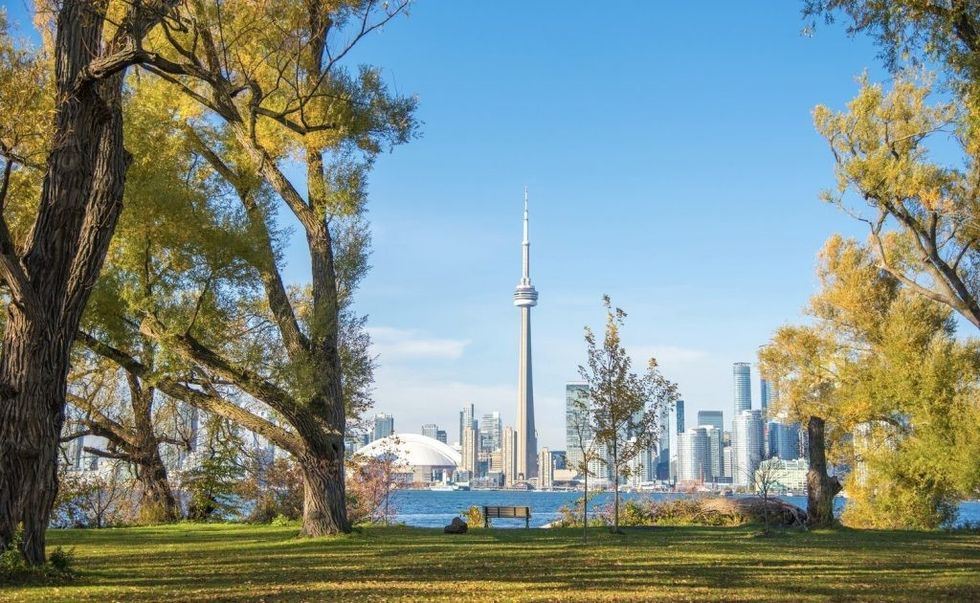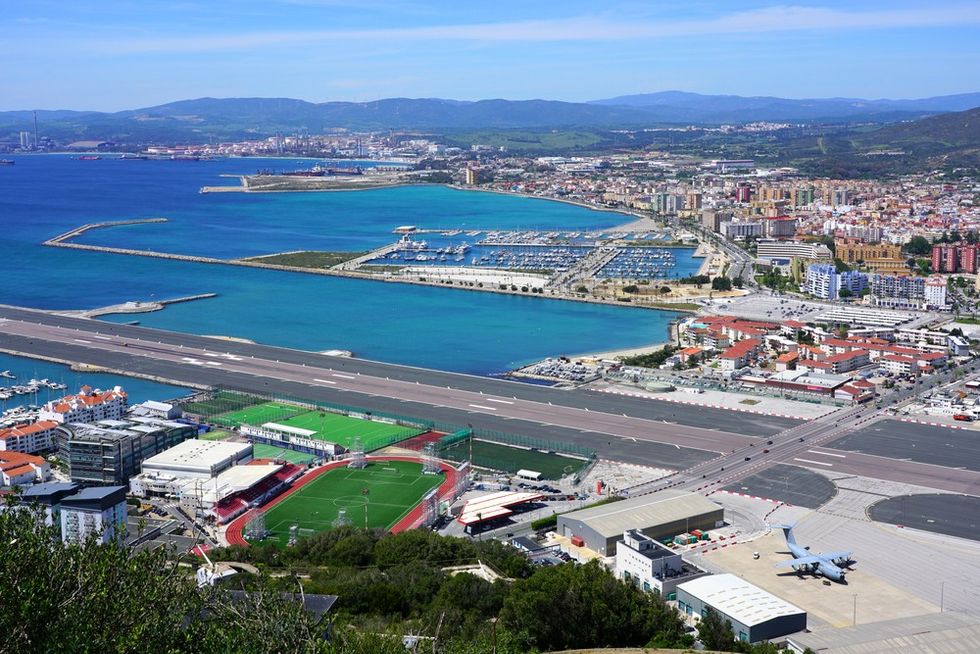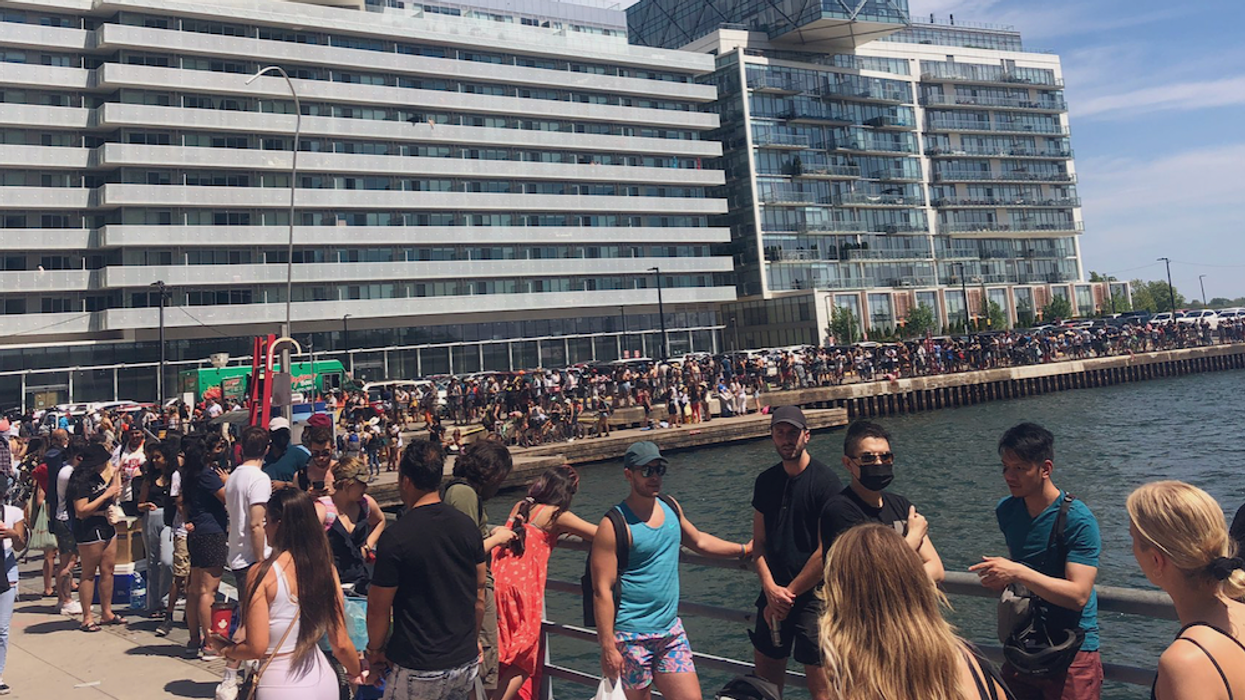Toronto got a dose of sizzling summer heat this weekend.
Naturally, after months of perpetual lockdown-inspired stir craziness, city residents busted out their summer gear, slapped on the sunscreen, and packed their coolers with plans to hit the breezy refuge of the nature and green space-filled Toronto Islands.
Many of them didn’t make it past Queens Quay.
Accessing the islands turned into a maddening challenge, as Toronto's ferries -- running on a limited schedule and a reduced capacity as a result of the pandemic -- failed to accommodate the demand. Even those who had purchased a ticket online before they sold out were met with long queues to get onboard. As a result (although they likely would have been long, regardless), the lineups for water taxis grew, sprawling down the street, as hundreds and hundreds of island goers baked in the sun waiting for transportation across the lake.
But the whole ordeal isn’t surprising. In fact, some may call even it inevitable.
We had all of the ingredients for a frustrating scene down by the waterfront: the first weekend of sticky summerlike weather, fresh air-craving residents who’ve been locked inside for seven months (many, without the luxury of backyards), a limited ferry schedule, and the fact that other outdoor spaces like patios and outdoor condo amenities remain closed.
There has been many a humid summer Saturday or music festival hosted on the Toronto Islands in recent years that have demonstrated that -- with its current infrastructure -- they aren’t equipped to transport of thousands of people in the same time frame.
But the Toronto Islands’ transportation woes aren’t limited to pandemic times or large-scale events that sound better in theory than practise. It’s been an issue for a while now. And it's a shame to have such a potentially beautiful day on the islands marred by stress on both ends of the journey. Long ferry (and, sometimes, water taxi) lines have characterized the entire island-going experience for decades. Especially when the city springs back to life post-pandemic, Toronto will only increase in density with every glassy new condo building built.
In other words, the situation will only continue to get worse unless we change it.
“Access to the Toronto Islands was a problem long before the pandemic because a city of three million in the twenty-first century is being served by a ferry service that hasn't changed much since the 1920s when the population was tiny,” says Shawn Micallef, co-founder of Spacing. “We also have a Parks Department and city council that are indifferent to the actual day-to-day needs of Torontonians without cottages of their own to escape the city and enjoy the island.”
In a recent Tweet, he says the City has semi-privatized access to the islands for years. And he’s not wrong. It’s simple to access the Toronto Islands if you have a boat, but a financial stretch for some families who can’t afford ferry or water taxi tickets for everyone. In fact, the argument of equal access is perhaps a louder one than the one centered on frustrating wait times.

In the longer term, it is definitely time to plan for the future when it comes to accessing the world-class public space that is the Toronto Islands. This especially rings true now, when exciting plans from the City to revamp the island are in the works and when the pandemic has highlighted the importance of accessible outdoor urban space.
Naturally, one idea is to create a fixed link between mainland and the islands. The calls for a bridge to the network of islands from Toronto’s concrete have happened for years. Most recently, Toronto architectural firm RevelHouse is the latest organization to put forth a proposal for a bridge to the Toronto Islands in attempt to democratize the space.
"This structure can be an easy way for pedestrians, cyclists (and potentially service vehicles) to access the Island's parks without needing to use the inconvenient ferry system,” reads the proposal. “This iconic structure (that includes a swing bridge over commercial vessels) would also add a desired amenity to the redeveloped Portlands as they come to life.”
Another idea that has floated around is to take a page from Billy Bishop Airport’s book and create an underground tunnel between the mainland and the islands. Or – better yet, for the interim – use the airport’s existing privately-funded tunnel as an access point to the Toronto Islands, says Micallef.
“Short of building a pedestrian and cycling bridge, local officials could look at using the island airport tunnel and timed crossings of the runway,” says Micallef. “It’s not as far-fetched as it sounds; in Gibraltar, people walk across the main runway there every day.”

Otherwise, Micallef says the ferry service needs to be revamped – and quickly. “In Amsterdam, the ferries pull in and out quickly and carry much more volume than Toronto's old and slow ferries that take a long time to dock and get people on and off,” he says. “Toronto needs a new fleet of big fast ferries.”
The City even shut down plans for a private ferry service a few years back, says Micallef. Furthermore, back in 2017, we were told of a new fleet of ferries by the City that were set to arrive within a few years. And we're still waiting for updates, wondering if that ship has sunk.
For some (like, for example, longtime Toronto Island residents), sticking to the status quo is the ideal option; the ferries are admittedly charming and part of Toronto's history. Plus, perhaps the islands (in theory) simply weren't meant to be overrun with so many people on any given weekend.
But, the reality remains that ferry ridership is increasing at a notable rate in recent years, and it's creating an unsustainable logistical nightmare at times. Currently, there are no plans for an underground tunnel or bridge to the beloved islands in the near future. As for fancy new ferries, we’ll have to wait and see.





















